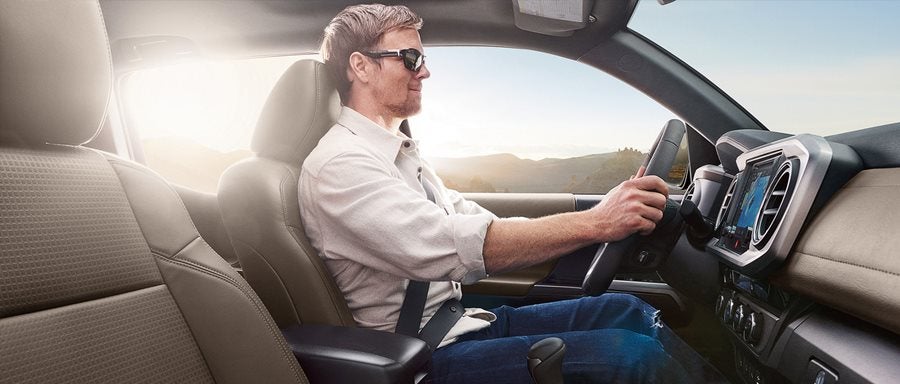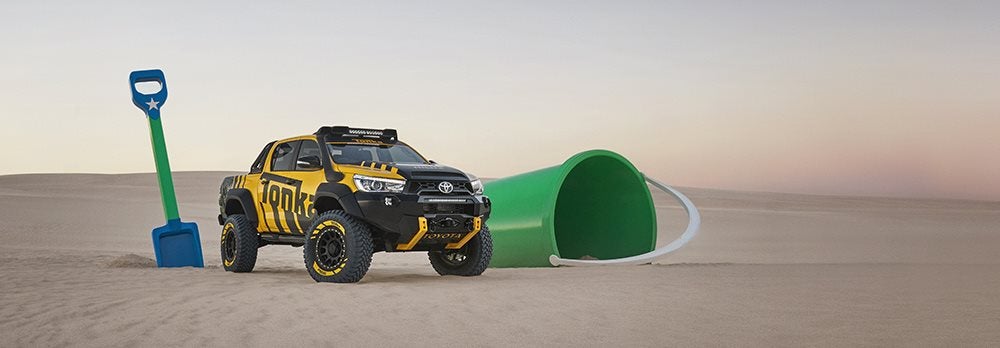
Anyone that has found the misfortune to be caught in a Nashville thunderstorm understands that high winds and intense lightning only represent one part of the danger equation. After Mother Nature’s symphony, another danger lurks on area roads and highways. Large puddles of water create the potential for dangerous hydroplaning, which becomes a much more serious issue for Toyota trucks that carry more bulk than smaller Toyota vehicle such as the Camry and Sonata.
The automotive team at Toyota of Cool Springs wants our customers to remain safe on slick driving surface. This is why we offer advice on what to do when your truck hydroplanes.
A Multiple Choice Question That You Cannot Afford to Fail
Multiple choice questions at least give us a fighting chance to get the answer right. However, in the case of your truck hydroplaning, you cannot afford to roll the dice and guess which answer prevents you from crashing your Toyota vehicle. In the case of your Toyota truck hydroplaning, you have four options to prevent the truck from spinning out of control.
- Slam on the brakes
- Continue pumping gas via the gas pedal
- Remove foot from gas pedal and cruise
- Slowly apply brakes
Lucky for us, this question does not include the mind boggling options of “All of the above” or “None of the above.”
Suppress the Urge to Panic
When a Toyota truck hits a puddle or even a small slick spot on the road, the urge to panic overwhelms the senses. You must suppress panic the instant it arises during the advent of a hydroplaning crisis. Panic causes rash reactions, such as aggressively applying the brakes or gas pedal. Hydroplaning produces an immediate loss of traction that causes the truck to spin dangerously out of control. Any sudden strong pressure applied to the brakes or gas pedal accelerates the truck’s loss of control. So, we eliminate answer options A and B.
Drivetrain Matters to Stop Hydroplaning
A Toyota truck that operates on a rear wheel drivetrain that includes ABS and traction control requires the driver to search for open dry areas of the road to travel. The same safety principle applies to Toyota trucks that include front wheel drive, regardless of whether ABS and traction control comprise part of the vehicle safety package. Drivers should apply light pressure on the gas pedal and gently steer the truck towards the open dry space on the road. Moreover, never engage cruise control during a deluge. Toyota trucks possess technology that recognizes water build up and hence, automatically reduce the speed of truck. The slower truck speed accumulates more water under the tires, which increases the likelihood of hydroplaning.
How to Prevent Hydroplaning
It’s one thing to know how to stop your Toyota truck from hydroplaning and quite another thing to prevent it from happening. Our dedicated team of automotive professionals at Toyota of Cool Springs always emphasizes the safety measures that you need to take for keeping safe on Nashville, Tennessee, area roads. In the case of preventing your truck from hydroplaning, we recommend paying attention to the condition of your Toyota truck’s tires.
Check Tire Depth and Pressure
Toyota truck tires that do not conform to factory recommended pressure have a much better chance of causing the truck to hydroplane. You need to check the pressure on your tires at least once per week to ensure you have enough pressure to reduce stopping distances on slick roads. The depth of the tread on your Toyota truck tires also plays a role in the prevention of hydroplaning. Worn tires cannot grip wet road surfaces and thus, you can expect your truck to skid dangerously past the point of no return.
Contact one of our automotive experts to learn more on what to do when your truck hydroplanes. We not only have the answers, but also our service center can help correct any flaws that cause dangerous hydroplaning.









